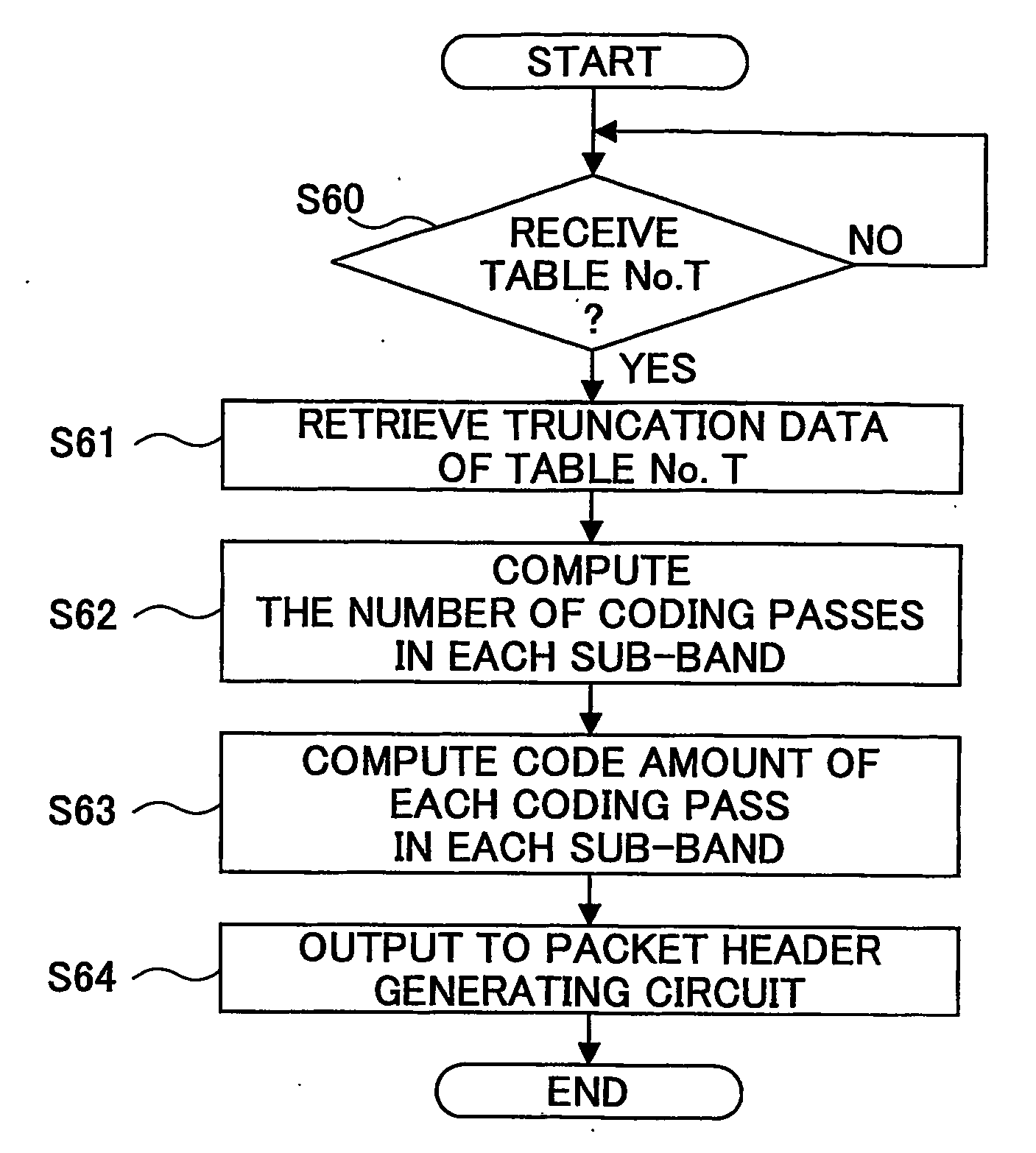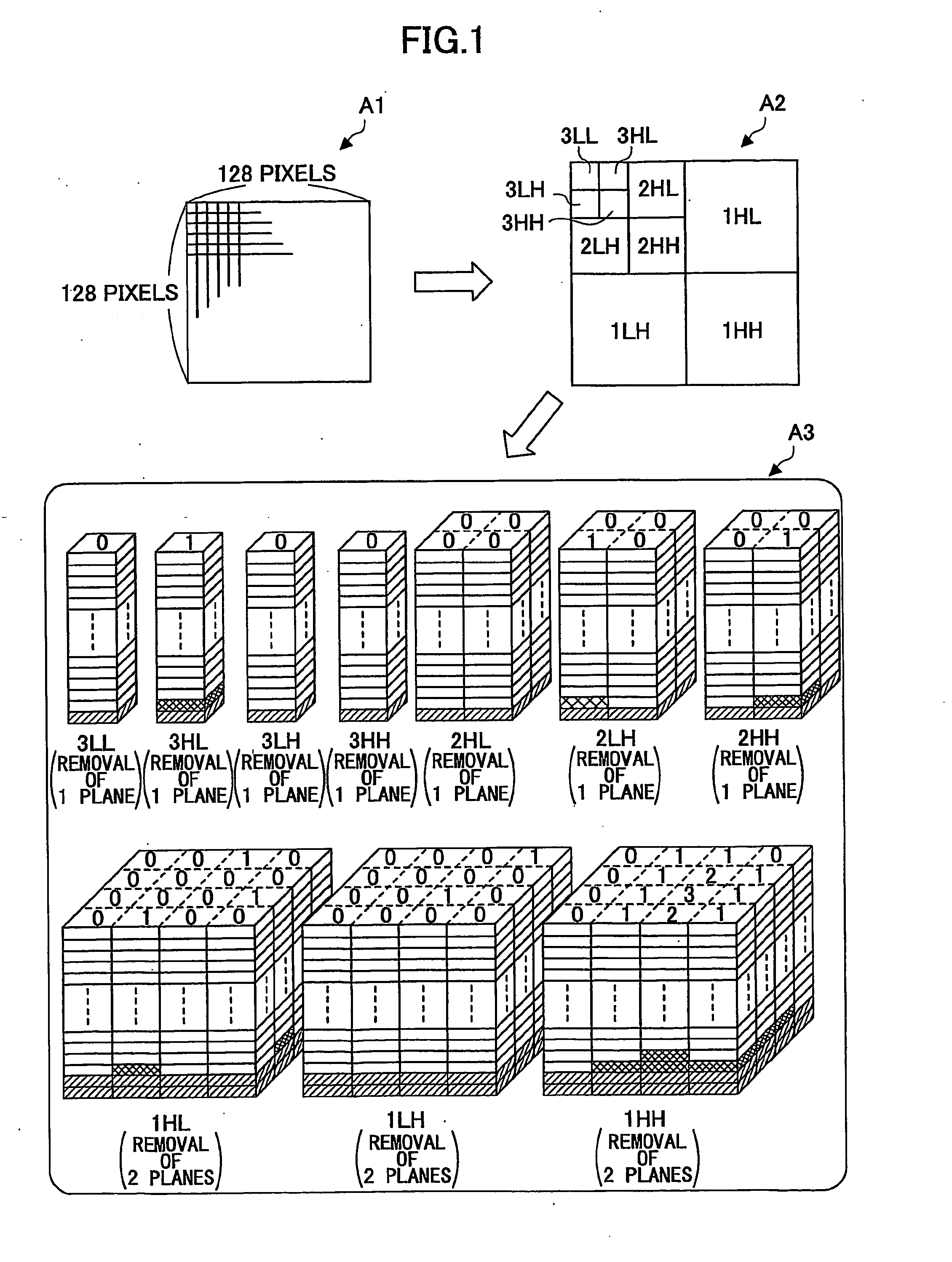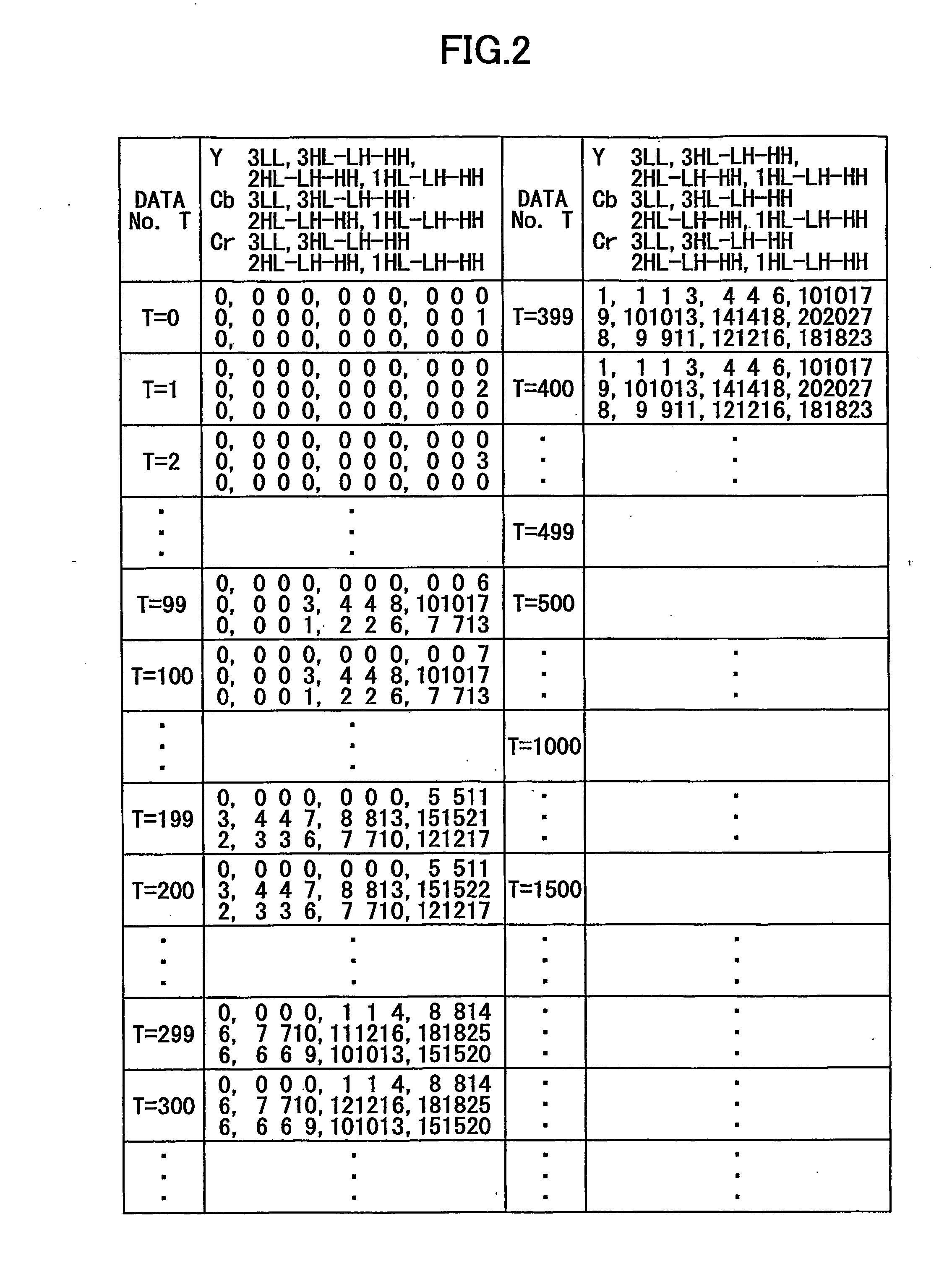Image compressing apparatus that achieves desired code amount
- Summary
- Abstract
- Description
- Claims
- Application Information
AI Technical Summary
Benefits of technology
Problems solved by technology
Method used
Image
Examples
first embodiment
(1) First Embodiment
[0042] (1-1) Outline of Data Removal
[0043]FIG. 1 is an illustrative drawing for explaining the removal of code data that is performed by an image compressing apparatus 100 (see FIG. 3) according to the first embodiment. An example to be examined here is a case in which image data having 128×128 pixels as indicated by an arrow A1 is encoded. First, the image data is converted into data of three color components Y, Cb, and Cr. Since each color component data is processed in the same manner, a description will be given only with respect to the processing of Y component data. Two-dimensional discrete wavelet transform is performed on the Y component data for the purpose of frequency analysis, producing 16-bit wavelet coefficients for sub-bands as indicated by an arrow A2 (i.e., 3LL, 3HL, 3LH, 3HH, 2HL, 2LH, 2HH, 1HL, 1LH, and 1HH). The wavelet coefficients are grouped into the respective sub-bands, and are further divided into 16 bitplanes. The wavelet coefficients ...
second embodiment
(2) Second Embodiment
[0114]FIG. 13 is a block diagram showing the construction of an image compressing apparatus 200 according to the second embodiment. The image compressing apparatus 200 according to the second embodiment identifies optimum truncation data by comparing a total amount of code data with a desired code amount where the total amount of code data is obtained from a masking amount of each code-block of each sub-band and a code amount of each coding pass of each code-block. The total amount of code data is what remains after coding passes in each sub-band are removed based on the truncation data.
[0115] The construction of the image compressing apparatus 200 according to the second embodiment is basically the same as that of the image compressing apparatus 100 according to the first embodiment described above (see FIG. 3). In the following, a description will be given of a data-processing circuit 210 and a rate control circuit 220, which differ from those of the image co...
third embodiment
(3) Third Embodiment
[0135]FIG. 17 is a block diagram showing the construction of an image compressing apparatus 300 according to a third embodiment. Like the image compressing apparatus 100 of the first embodiment, the image compressing apparatus 300 identifies optimum truncation data by comparing a code-data removal amount with a desired code removal amount. In doing so, the code-data removal amount is obtained in all the sub-bands based on a masking amount of each code-block of each sub-band and a code amount of each coding pass of each code-block when coding passes are removed plane by plane in each sub-band based on the truncation data.
[0136] In the image compressing apparatus 100 of the first embodiment, a code amount (a change in the code data amount) that is removed when coding-pass code data are removed plane by plane with the lowest-order bitplane first in code-blocks of each sub-band is stored in the memory C or the memory D. Then, the code-data removal amount for all the...
PUM
 Login to View More
Login to View More Abstract
Description
Claims
Application Information
 Login to View More
Login to View More - R&D
- Intellectual Property
- Life Sciences
- Materials
- Tech Scout
- Unparalleled Data Quality
- Higher Quality Content
- 60% Fewer Hallucinations
Browse by: Latest US Patents, China's latest patents, Technical Efficacy Thesaurus, Application Domain, Technology Topic, Popular Technical Reports.
© 2025 PatSnap. All rights reserved.Legal|Privacy policy|Modern Slavery Act Transparency Statement|Sitemap|About US| Contact US: help@patsnap.com



